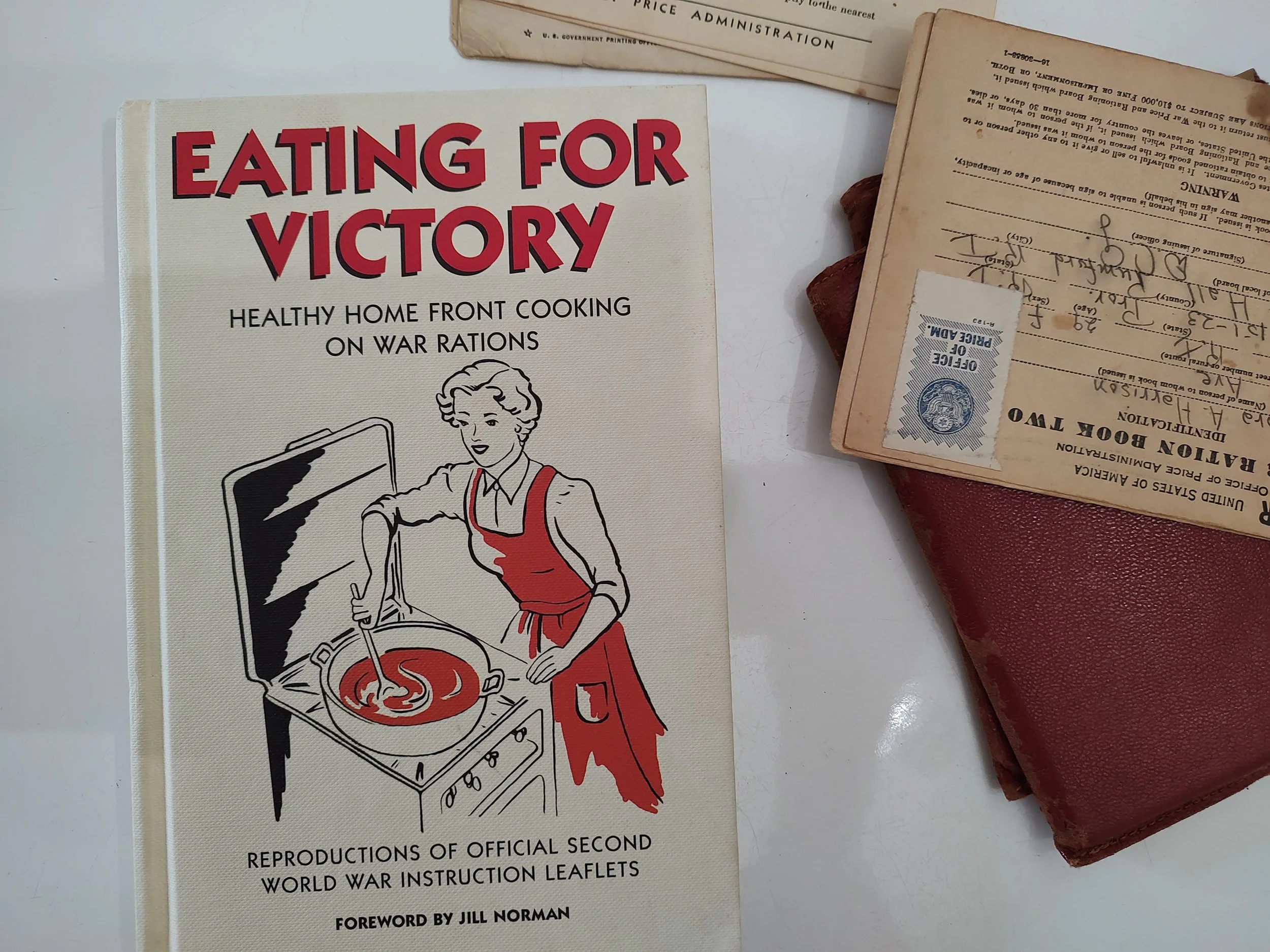Quick Meals on the Ration
JUMP TO RECIPE
Sometimes homemakers during World War II just needed a break. They might have completed a long stint in a factory or canteen. They might have done farm chores since before dawn. They might have toiled away in an office overrun with urgent needs. And then at the end of it all, they had to drag themselves home on foot or by bus to begin the housecleaning and cooking.
Keeping Healthy in Wartime
Nearly every able-bodied person was expected to do war work and many civilians were conscripted for particular jobs. The workdays were long. At the end of them it would have been challenging enough to go home and start over again even with plentiful supplies—but wartime homemakers often had to figure out meals with odd ingredient combinations—or without the main ingredients.
A number of governments had departments especially designed to help with such problems. They had learned from World War I how badly things could go when people did not have adequate nutrition. Scientists began earnest study of the properties of foods. They developed charts to teach their populations which types of foods needed to be consumed and how often. The special needs of children, pregnant and nursing mothers, and elderly citizens were outlined. Somehow, everyone’s nutritional needs had to be met, even though many common ingredients could no longer be found.
Ministry of Food Leaflets
In Britain, the Ministry of Food published many leaflets with recipe and menu ideas. Suggestions and advice were also broadcast on programs such as The Radio Doctor and demonstrated publicly in department stores where groups of women could watch.
One of the leaflets produced by the Ministry of Food was titled What’s Left in the Larder. It included a wide variety of tips and ways to use up leftovers. There were recipes for using up stale bread, fish and vegetables, meat and vegetables, stale crusts and puddings. I decided to try one of the recipes for using the last bit of cooked beef (and vegetables, if desired). I can only imagine how Dresden Patties got their name—it seems curious that they named a British recipe for a city in Germany. At any rate, this recipe uses a few slices of bread (or rolls) and a miniscule amount of meat to make a delicious and filling meal. Next time you are browning ground beef for another recipe, you might like to save a mere four ounces—along with four ounces of minced, cooked vegetables—to make this recipe later. I used about a cup of peas and carrots and it was so good.
Frying the bread in a bit of fat—I used olive oil—takes this dish over the top and I still can hardly believe that four hearty servings were made from such a tiny amount of meat. And yet, the entire dish had a wonderful meat flavor and was quite filling. I tried it using thick slices from a rustic bread loaf and also with soft ciabatta rolls. Both turned out well. Maybe the most wonderful thing about this recipe, however—particularly for a weary wartime homemaker—is that it comes together almost faster than you can man two skillets! I made the filling in one and could scarcely get the ingredients in fast enough—it was all done in less than five minutes—and toasted the bread in another five minutes. For an exhausted person in charge of dinner, that’s hard to beat.

Dresden Patties
This recipe uses a mere 1 ounce of meat per serving and comes together so fast it almost doesn't seem possible--a delicious way to use the last bit of cooked meat and bread; leftover veggies can also be added.
Ingredients
Instructions
- Heat the dripping, add the flour and cook until slightly browned.
- Gradually stir in the liquid and bring to a simmer, stirring constantly.
- Add the meat, vegetables if used, seasoning and sauce. Mix well and keep hot while frying the bread.
- Trim the rounds of bread [optional] and cut a small circle from the center of each.
- Fry rounds and circles in hot fat until golden brown. Drain if necessary; then, fill the centers with the meat mixture.
- Place a small round of fried bread on top to form a lid and serve hot with chopped parsley sprinkled over.
References
National Archives. Eating for Victory: Healthy Home Front Cooking on War Rations (Reproductions of Official Second World War Instruction Leaflets). London: Michael O’Mara Books Ltd, 2007.
“Some trust in chariots and some in horses, but we trust in the name of the LORD our God. They collapse and fall, but we rise and stand upright.”
Psalm 20:7-8



